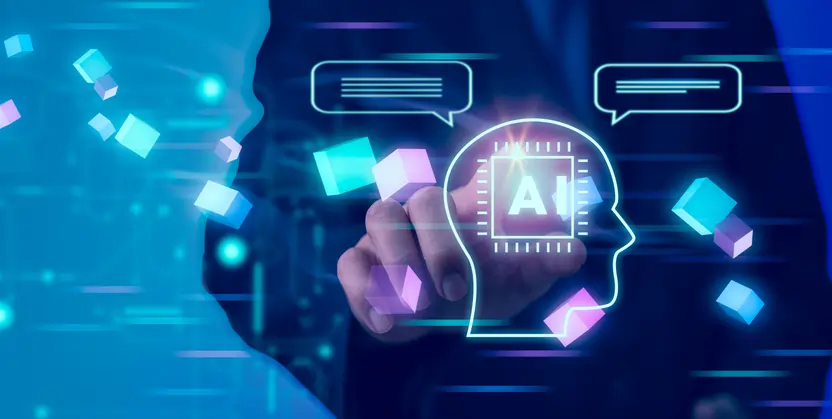
In the realm of artificial intelligence (AI), the choice between horizontal and vertical development models significantly influences the effectiveness of AI solutions across industries. Horizontal AI aims to address a broad range of challenges across sectors, while vertical AI takes a more focused approach, tailoring solutions to specific industry needs. This article explores the practical aspects of horizontal and vertical AI, offering insights into decision-making for industry-specific applications and the critical factors shaping this strategic choice.
Exploring the Versatility of Horizontal AI
Championed by major platforms like OpenAI, horizontal AI aims to create models with broad applicability. The goal is to develop AI systems that can tackle diverse challenges across various sectors, promising a flexible tool with widespread impact. Exemplified by models like OpenAI’s ChatGPT, horizontal AI is pre-trained on extensive datasets, showcasing capabilities in natural language processing and image recognition. It excels in fundamental tasks and continually learns from interactions, adapting to evolving user needs.
However, the broad applicability of horizontal AI may compromise depth, lacking precision for specialized tasks in specific industries. Recent advancements like fine-tuning offer opportunities to leverage knowledge within horizontal AI models, focusing their power on specific applications.
The Strategic Edge of Vertical AI:
Conversely, vertical AI takes a targeted strategy, focusing on the intricacies of a specific industry or niche. Instead of universal applicability, vertical AI is crafted to understand the specific language, challenges, and data formats of a given sector. This tailored approach enables a deeper comprehension of industry-specific requirements, allowing AI solutions to seamlessly integrate into and enhance workflows.
Vertical AI is crucial in industries with highly specialized demands, such as manufacturing, healthcare, finance, or law. Each sector has its own complexities, and generic AI models may struggle to address nuanced challenges. Vertical AI, specially trained on unique datasets and finely tuned to specific domains, becomes a strategic asset, facilitating streamlined processes, improved accuracy, and industry-specific innovation.
Navigating Industry-Specific Challenges:
In the manufacturing industry, the interplay between horizontal and vertical AI is evident. Consider the importance of technical drawings, serving as blueprints for products. These blueprints detail dimensions, tolerances, and material specifications, demanding pattern recognition and a deep understanding of industry-specific terminology.
Horizontal AI, while proficient in recognizing patterns, may fall short with the complexities of manufacturing technical drawings. Vertical AI, tailored to the manufacturing sector, navigates technical drawings with precision. Precision engineering relies on terms like tolerance, machining, and CAD (Computer-Aided Design). Vertical AI recognizes and understands these terms within the manufacturing workflow, becoming an invaluable collaborator.
Collaborative Development for Industry-Tailored AI:
Creating industry-specific AI solutions requires collaboration between AI developers, domain experts, and industry stakeholders. Customizing AI models for an industry demands an understanding of its intricacies, workflows, and challenges. This collaborative approach ensures that resulting AI systems recognize industry-specific patterns and align with broader industry goals.
While vertical AI development poses challenges in time, resources, and domain expertise, the long-term benefits outweigh initial costs. Precision and customization offered by industry-specific AI contribute to increased efficiency, reduced errors, and a competitive edge.
Impact of Industry-Tailored AI:
The advantages of industry-specific AI extend beyond technical proficiency. These systems can revolutionize supply chain management, optimize production processes, and enhance overall efficiency within an industry. In manufacturing, precision, and speed are crucial, making AI that comprehends industry language strategically imperative.
Industry-specific AI also plays a pivotal role in innovation. As manufacturing technologies evolve, AI must adapt swiftly. A vertical AI system, deeply embedded in the industry, can incorporate innovations into its workflow, ensuring manufacturers stay at the forefront.
Balancing for Your Industry’s Future:
The choice between horizontal and vertical AI is a nuanced exploration of advantages and trade-offs. While horizontal AI provides versatility, the depth and precision of vertical AI are indispensable, especially in sectors with specialized demands. Industries integrating AI must strike a balance. Horizontal AI serves as a foundational tool, offering a broad understanding of patterns. Vertical AI refines this foundation, providing tailored solutions that redefine industry operations.
The future of AI in industries relies on a combination of both approaches, enabling businesses to harness AI’s potential for innovation, efficiency, and competitiveness in an evolving technological landscape.
CADDi is a global manufacturing company on a mission to “unleash the potential of manufacturing.” The company strives to transform the manufacturing industry through its primary offering, “CADDi Drawer,” an AI-enabled drawing management system, helping further unlock the potential of manufacturing by significantly improving the efficiency of procurement teams. Read the latest report by CADDi on data management in the manufacturing industry here.


